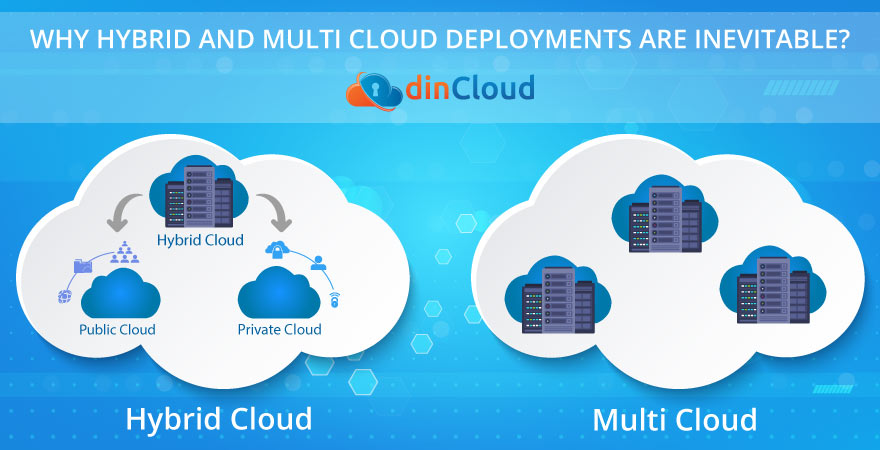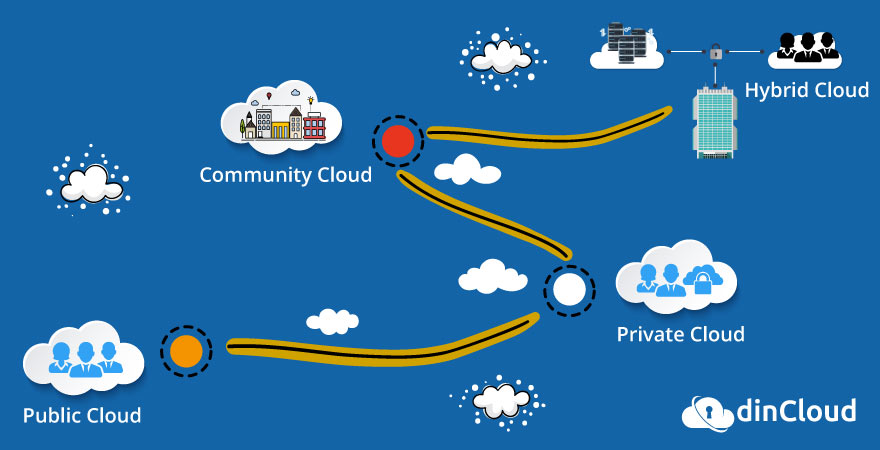The cloud computing industry has remained very dynamic from the very beginning. Rather, constant evolution has been one of the hallmarks of the cloud. A key aspect of this evolution has been the introduction of various cloud deployment models.

The Primitive Cloud Model
When we glance at the earliest days of cloud computing, we will realize that it revolved around a single Cloud Service Provider (CSP). You had to choose a CSP that ticked most of the right boxes, while compromising on some requirements was unavoidable.
Present Cloud Computing Model
Fast forward to the present era of cloud computing and you will find that this is perhaps one of the best times to be prospecting for a cloud solution. Today, we live in the age of hybrid and multi cloud environments, which are briefly explained below.
What is Hybrid Cloud?
In a hybrid cloud deployment model, the entity retains core processes and workloads over an on premise hardware. In order to avail the flexibility that is unique to the cloud, some processes in a hybrid environment are outsourced to a third party CSP like dinCloud.
The motivation behind a hybrid cloud is either data security or compliance related limitations in most cases. Still, if a hybrid cloud environment is well orchestrated and integrated, it has the potential to offer you the “best of both worlds”.
dinCloud and Hybrid Deployments

As a leading Cloud Service Provider (CSP), dinCloud has all the requisite expertise in house to design and integrate a hybrid cloud environment for your enterprise. In this model, you can avail dinCloud’s robust Hosted Virtual Desktops (dinHVD) for some workloads.
However, dinCloud’s professionals will first need a deep insight of your existing on premise infrastructure, existing needs and future requirements. Only then would it become possible for us to craft and integrate an optimal hybrid cloud solution for your needs.
Multi Cloud Deployments
Although the concept of multi cloud is relatively new, most leading experts of the cloud industry saw it coming years in advance. In a multi cloud environment, you can leverage the services and solutions of more than one cloud provider simultaneously.
The main credit for multi cloud deployments rests with the cloud end users themselves. It was a persistent requirement of cloud users across the board that why should they settle for less than the best, when such a cloud service was offered by another provider.
Evolution to Multi Cloud Deployments
Therefore, cloud service providers from across the spectrum had to come out of their comfort zones and collaborate towards offering multi cloud. In a multi cloud model, you can pick and choose your cloud provider who is best at what you need.
What Makes Multi Cloud a Reality?
There are two main dimensions to this trend. Firstly, large CSPs like AWS, Azure and Google Cloud have developed cross integration of their cloud services and offerings to a great extent. A lot of R&D, coupled with financial resources have gone into these initiatives.
One the other hand, containerization and proliferation of open source developer platforms have accelerated the deployment, integration and functioning of multi cloud environments. Now, developers with the right skill set can leverage powerful cloud tools free of charge.
That’s not all, cloud companies are not only providing developers with the requisite tools, but also allowing these developers to utilize their state of the art infrastructure for testing and debugging cloud integration challenges, a key step towards the multi cloud era.
dinCloud and Customized Cloud Solutions
Being an innovative cloud provider, dinCloud is highly focused on providing customized cloud solutions to its valued users. We offer reliable, secure and robust cloud hosted services on an industry beating flat rate pricing model.
Contact Us for your hybrid or multi cloud needs and we will try our level best to design, implement and integrate a cloud solution that best fits your unique needs. With dinCloud, your possibilities are endless.


